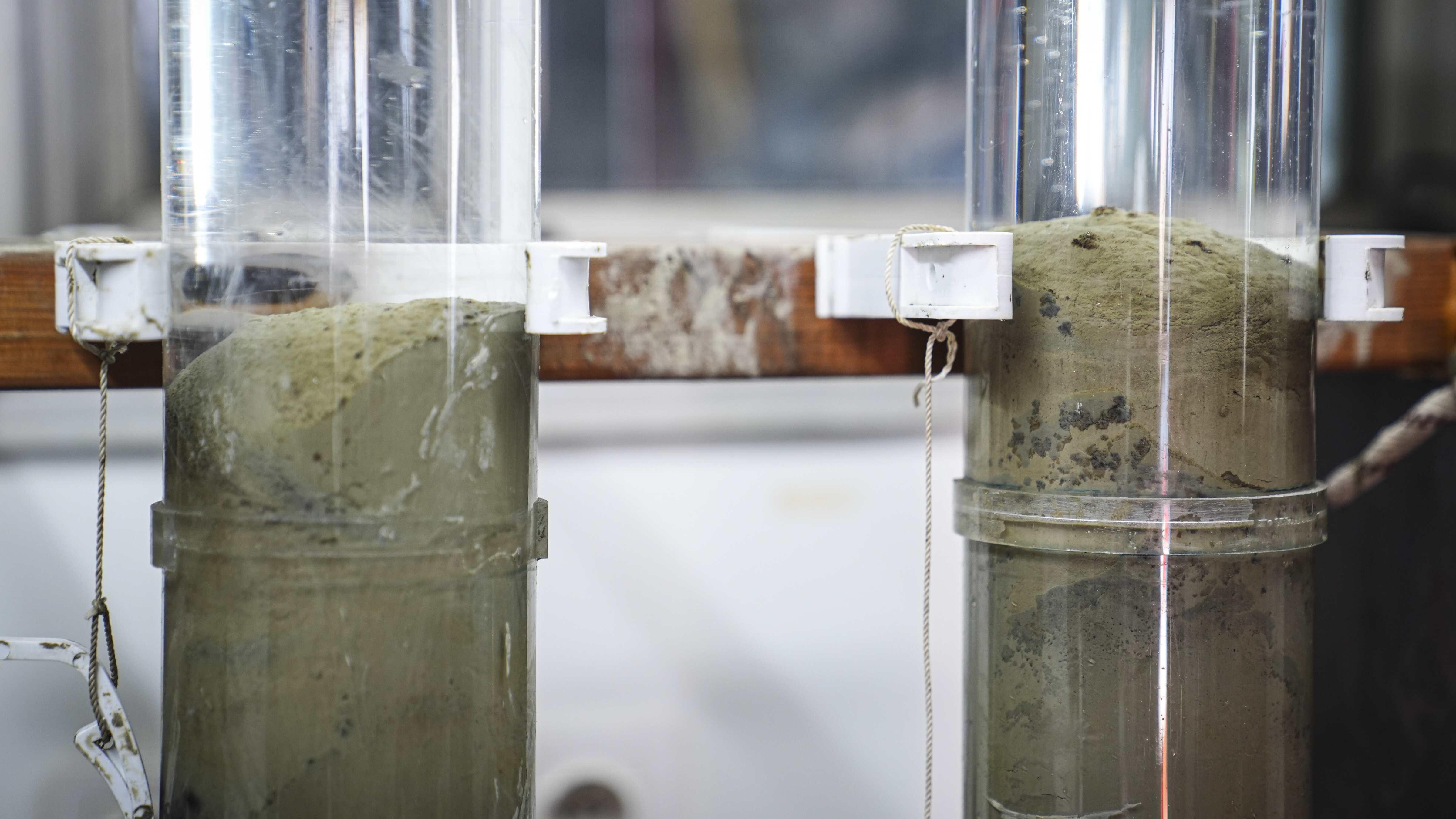
Preliminary findings are beginning to emerge in a comprehensive study examining the pollution history of the Marmara Sea, one of Türkiye’s most fragile inland seas.
Conducted under a Scientific and Technological Research Council of Türkiye (TÜBİTAK) program in partnership with Middle East Technical University (ODTÜ), Akdeniz University, Ege University and Recep Tayyip Erdoğan University, the study seeks to trace how pollutants have accumulated in the sea over decades.
Using ODTÜ’s research vessel “Bilim-2,” scientists collected sediment cores from 20 locations across the Marmara Sea. Employing an “octopus” coring device, they extracted samples measuring 40 to 50 centimeters in length, which are now being analyzed to reconstruct a detailed timeline of contamination.
Each institution is focusing on a different dimension. Ege University is conducting dating analyses based on cesium and lead distribution, and Akdeniz University is classifying microplastics. Recep Tayyip Erdoğan University is identifying plastic polymers, while ODTÜ is carrying out chemical measurements of pollutants.
Preliminary findings are already pointing to worrying trends. Mustafa Yücel, deputy director of ODTÜ’s Institute of Marine Sciences, said that “the layers from recent decades show a marked rise in both metals and plastics.”
Yücel explained that sediments act as an archive of marine history, preserving the environment of surrounding geographies.
The study will provide two sets of information: The amount of pollution at specific points in time and the sedimentation rates across the Marmara basin. This will enable researchers to estimate how much pollution entered the sea, how much settled on the seabed, and how it has been preserved over decades.
“This will be the first study in Türkiye to deliver such a reconstruction of pollution flows,” Yücel said.
Ultimately, the project aims to build a comprehensive database of pollution trends in the Marmara Sea. The findings will allow researchers to model future scenarios to shape strategies in mitigating the impacts of pollution.